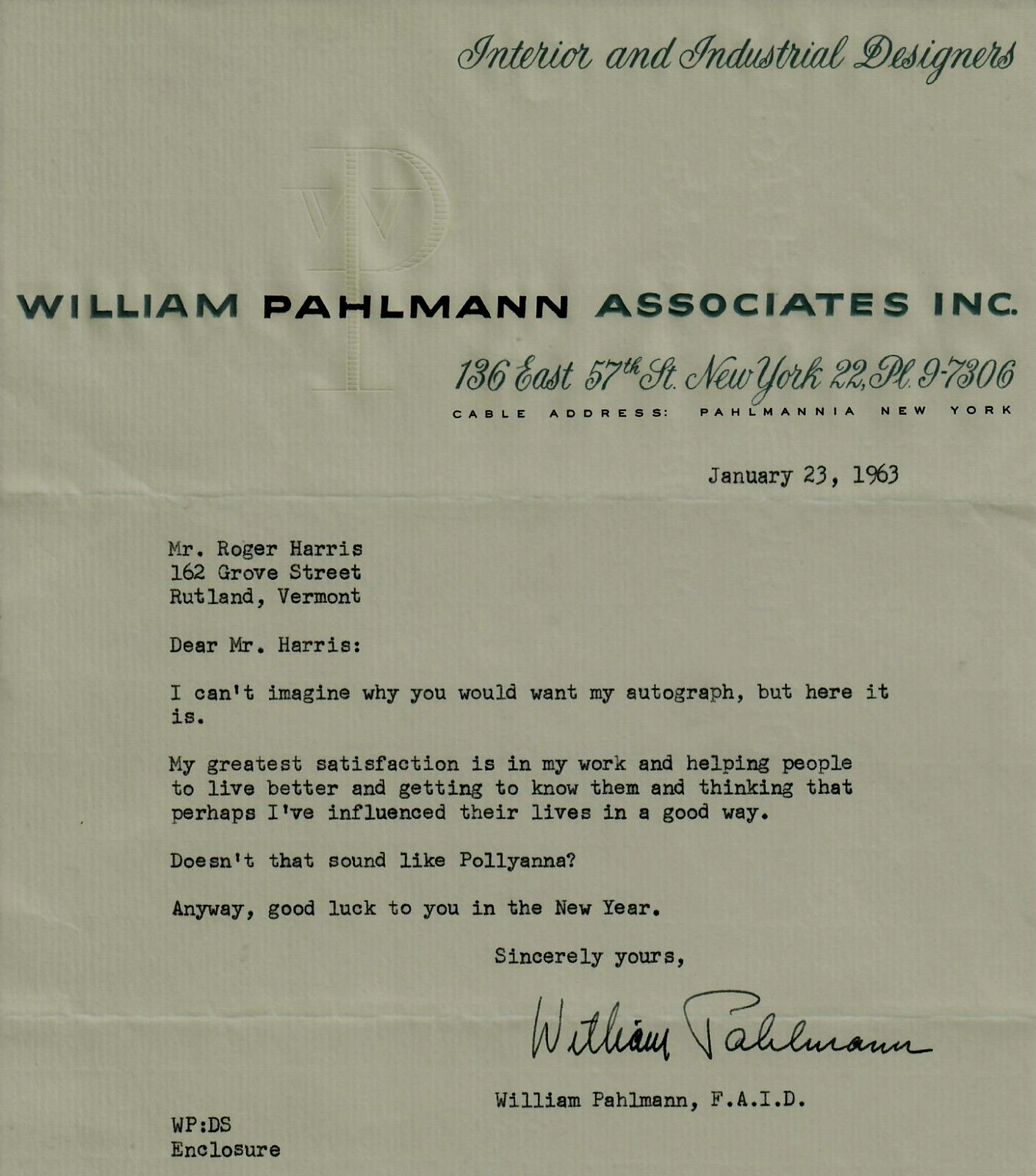When you click on links to various merchants on this site and make a purchase, this can result in this site earning a commission. Affiliate programs and affiliations include, but are not limited to, the eBay Partner Network.
Up for sale "Eclectic Style of Design" William Pahlmann Hand Signed TLS Dated 1963.
ES-6456E
William Carroll Pahlmann (December 12, 1900 - November 6, 1987) was a New York-based, mid-twentieth-century interior designer who popularized the eclectic style of design. The eclectic style borrowed decorative elements from different time periods and countries and often used bold color combinations, varying textures, and a mixture of antique and modern furnishings. Pahlmann employed eclectic design principles to accommodate his customers’ personal taste preferences and stressed the importance of comfort, functionality, and adaptability in his work. William Pahlmann was born on December 12, 1900 in Pleasant Mound, Illinois. His father died when he was six, and the family relocated to San Antonio, Texas, where his mother ran a boardinghouse. At the age of ten, he began to draw freehand and showed an interest in flower-arranging at the local Baptist Church. After completing high school, he accepted a job as a traveling salesman selling sewer pipe. While he was on the road, he completed a 48-lesson correspondence course from Arts and Decoration Magazine. He moved to New York in 1927 to study interior decoration at the New York School of Fine and Applied Arts, now the Parsons School of Design. Pahlmann helped pay his way through school as a dancer in Broadway musicals. In 1929, he was given a scholarship to study at Ecole Parsons à Paris (Parsons Paris School of Art and Design) in Paris, France. Upon his return to the United States in 1931, Seton Henry commissioned Pahlmann to decorate his eighteenth-century home, Pen Ryn, in Bensalem, Pennsylvania. Pahlmann’s extravagant design quickly garnered attention when the project was featured in Country Life magazine. Shortly after, he decorated a Manhattan apartment for Dorothy Paley, the first wife of William S. Paley, the founder of CBS. Although the ox-yoke headboard he designed for her bed attracted some criticism, the project helped to launch Pahlmann’s career. In 1936, Pahlmann was hired as the head of the interior decorating and home furnishings department at the Lord & Taylor department store in New York City by Walter Hoving. While in this position, Pahlmann helped to establish the model room as the premier method of advertising store merchandise. Although world’s fairs and museums already employed model rooms, stores had previously presented only vignettes of rooms to their customers. Pahlmann recognized that good interior decorating was also a form of good merchandising. One of Pahlmann’s most outstanding model rooms was the highly publicized “Pahlmann Peruvian” in November 1941. Following Pahlmann’s five-week tour of South America, Lord & Taylor premiered six model rooms featuring modern and antique Peruvian-style furnishings. The most popular presentation of model rooms, Pahlmann Peruvian attracted 20,000 to 30,000 visitors per month. In addition, Pahlmann’s designs were translated into a line of fabric and rugs for F. Schumacher & Co. Pahlmann maintained a close relationship with Hoving even after the latter’s departure from Lord & Taylor. He designed several Bonwit Teller department stores while the company was under Hoving’s leadership. Pahlmann lectured extensively throughout his career and sought to share his design ideas with a wide audience. From 1962 to 1973, he wrote a syndicated, thrice-weekly column entitled “A Matter of Taste” that ran in newspapers across the country and in several Latin American countries. In his column, Pahlmann provided his audience with general information on taste and style and introduced them to the basic principles of good design. He often wrote about the importance of color, balance, and the incorporation of modern and traditional design elements. Despite the democratic nature of his lectures and columns, Pahlmann insisted the average person did not have the necessary skills to design a successful interior and should consult a professional if at all possible.











